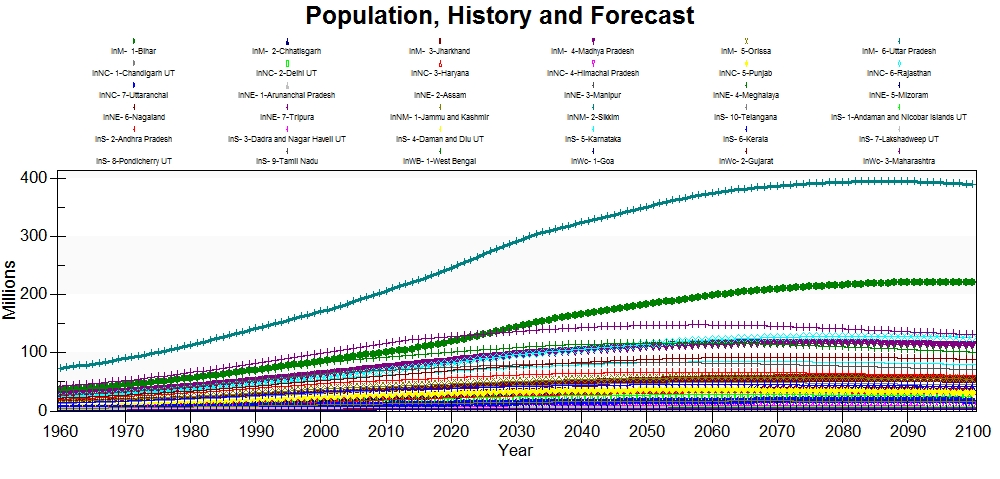Alternative India Population Sources
ORGI; Office of Registrar General India Health Survey
The ORGI population series was pulled from the DevInfo database, which has all of this intercensal health survey data including population historically starting in 2002 and forecasts through 2026. This source has a shorter time series of population by state, than the census, but it will be more up to date. The state of Telangana had to be estimated in this series because the data for Andhra Pradesh includes both Telangana and Andhra Pradesh. Unlike other population data sources there is not district level population data available in the DevInfo database. To estimate Telangana's population, district-level population data from the 2011 census was found for the districts that make up the state of Telangana. The sum of the districts that make up Telangana was subtracted from the state of Andhra Pradesh's population from the 2011 census. From the two state population estimates, a ratio of state population relative to the total population was found. This ratio was then used to estimate the appropriate populations for Andhra Pradesh and Telangana from the DevInfo database.
|
State |
2011 Population |
2011 Population Ratio |
|
Telangana |
30.987 |
0.4066 |
|
Andhra Pradesh |
45.223 |
0.5934 |
 Uttar Pradesh is the most populated state in India historically and through the end of the forecast's time horizon. Maharashtra is the second most highly populated state historically, but population growth is slowing and is forecast to plateau around 2025. Historically, Bihar has the third largest population in all of India and due to larger population growth rates, it is forecast to become the second largest state in India around 2025. The difference between Maharashtra and Bihar's population will increase through the end of the time horizon.
Uttar Pradesh is the most populated state in India historically and through the end of the forecast's time horizon. Maharashtra is the second most highly populated state historically, but population growth is slowing and is forecast to plateau around 2025. Historically, Bihar has the third largest population in all of India and due to larger population growth rates, it is forecast to become the second largest state in India around 2025. The difference between Maharashtra and Bihar's population will increase through the end of the time horizon.
Census of India
Typically, the official data source for subnational population is the national census. However, India's Census is conducted every ten years and there appears to not be any annual estimates available from this source. This makes the census data out of date because the last census was conducted in 2011, and will not be updated until after the 2021 census. Thus an alternative source is being used to ensure that population data is available to be updated more frequently than every decade.
The Census of India population series required estimation of Telangana's population relative to Andhra Pradesh because the more recent census was prior to Andhra Pradesh's bifurcation in 2014. The estimation was done by summing up district-level population data in the districts that make up present day Telangana in 2001 and 2011. The estimated total for Telangana was subtracted from Andhra Pradesh's official population data as a means to appropriately adjust Andhra Pradesh's population down. All data prior to 2001 was removed from the series for Andhra Pradesh and Telangana because district-level data prior to 2001 was not found.
In addition to estimating Telangana and Andhra Pradesh, the data was interpolated to fill data gaps. The series begins in 1961 and runs through 2011, with data every ten years. The data was interpolated by dividing the difference between each decade's data by 10 and adding it to the previous year.
